send us an email
| current
issue submissions contact archive 180 studio 180 gallery 180 forum |
cool
links Saatchi Gallery Online Noovo Magazine |
blog
archive 2007 Dec 2007 Nov |
Is a photograph a document or a piece of art? From that single question you can make sense of a lot of fine art photography, especially if you're in the sunset and flowers sort of mindset. If Ansel Adams is a god how can you possibly make sense of Thomas Struth or Edward Burtynsky?
To think about the question let's do a pocket history of photography.
In 1844 William Henry Fox Talbot published the first volume of The Pencil of Nature which was a book of various images. Fox Talbot's "Talbotypes" were developed in large part because he was a bad draftsman.
Six or seven years later emulsions were fast enough that photography became the preferred method of portraiture and painting left the long years of representationalism to go modern. Strangely enough, realism gave way to impressionism which was a "new" method of painting quickly to capture what could actually be seen on location and modern art spent quite a few years after that trying to figure out how to depict what is actually there to be seen. This led to such interesting things as cubism, futurism and a whole bunch of other isms.
Meanwhile, most photography professionals made their living taking pictures of people and places, documenting exotic and domestic life. A good sideline was had in making figure studies for painters and punters... more documents. They had a good scare in 1888 when Mr. Eastman introduced the roll film camera but Mom-as-photographer created the new genre of "snapshot" and the professional portraitists were safe. Mom's snapshots would show up after WWII in various guises such as street photography, sports and news photography, "the decisive moment", and other slice of life ephemera.
At around the same time the pros began making serious money on portraits, several amateurs began taking photographs that looked rather painterly. These photographers included Julia Margaret Cameron who started in 1863. The soft focus, dreamily costumed images were called Pictorialism since they looked like painted pictures.
Henry Peach Robinson was an earlier pictorialist who was heavily involved in the Royal Photographic Society in the UK, and who got into a debate with Peter Henry Emerson who argued that naturalistic photography was the true way to go. Robinson left the Society which became a bit documentarian and technical-minded for his taste and founded the Linked Ring to concentrate on photographic art.
Another member of the Linked Ring was Alfred Stieglitz, an American who formed the Photo Succession in 1902 in the USA when he returned there. In 1897 Klimt and a few other painters in Vienna had formed the Succession from the Austrian Academy, hence the name. From 1905 to 1917, Stieglitz and Edward Steichen ran the Little Galleries of the Photo-Secession which was more commonly known as the 291 gallery. Later Stieglitz opened An American Place, another highly influential gallery.
In the 1870's the Impressionists had exhibited their paintings in the salon of Nadar, a photographer in Paris. The Impressionists were a "Salon des Refusés" since the academy, stuck in the old representational style, would not endorse their painting. After 1913 the European Avant Garde painters who came after the Impressionists, were exhibited in Gallery 291 by Stieglitz in New York, exposing the American audience to the European modern art movement for the first time.
Art critic Sadakichi Hartmann was one of the first to criticize the pictorialist movement in the US, and suggested in 1904 that if an etching should look like an etching and a lithograph like a lithograph, than a photograph should look like a photograph. A pictorialist at the beginning, by 1910 Stieglitz had moved to Hartmann's viewpoint, becoming a proponent of "Straight Photography". In 1936 at An American Place, he showed the photography of Ansel Adams.
In 1932 Adams had formed the f64 group with Edward Weston and several other photographers. This was a West Coast Straight Photography group that had an influence far beyond it's few months of existence.
Once we hit World War II we come into the realm of the hip pocket 35mm camera and the fragmentation of photography into its various genre we know today. The Europeans were also arriving in force which only pushed the experimentation even further.
Let's return to Europe. While the Americans were settling into Straight Photography in the '30s photographers like Man Ray were solidly inside the modern art movement, in 1921 he was producing his Rayograms in Paris. Other photographers were just as busy looking and shooting and creating the image, not worrying too much about technique.
In the 1900s Lewis Hine, following in the footsteps Jacob Riis, was taking photographs of Immigrants at Ellis Island in New York. A generation later in the 1930s, August Sander began his documentary portraits in Germany. Let's follow this line a bit. Sander's work doesn't seem to be art, it's more a good old-fashioned catalogue of types, such as you had from the beginning of photography with travels through the exotic east. Only it was carried out at home.
From Sander and his types of people, we can move to Bernd and Hilda Becher and their architectural types, in the early '60s this duo started shooting water towers, houses and other structures, exhibiting them in groups which showed similar things shot from similar angles. This was a visual minimalism that fit well with the minimalist art movement that was strongest in the late '60s and early '70s, and suddenly a set of pictures of the sides of several tudor houses was art. Think of Warhol's Marilyn series of silkscreens before you scoff.
The Bechers begat Thomas Struth, Andreas Gursky and Thomas Ruff, who make art by shooting church interiors, stores and expressionless portraits. Gursky holds a record for "most expensive print" by the way.
We'll leave the history here, there's enough to start the net search if you want to follow some lines.
We see then, that photography originally rocked back and forth between the poles of documentation and art, and finally the lines have begun to be blurred. Originally art meant painterly effects from the amateurs and documentation meant good clear portraits and travel records from the professionals. Partly in reaction to Pictorialism the amateurs began to champion Straight Photography so that photographs looked like photographs, while trying to keep the images artistic. At the same time, the documentarians ended up being pulled toward the artistic so that now a "picture of nothing" has become art.
Happy New Year.
In an article on Slate here http://www.slate.com/id/2145277/?nav=ais author Jim Lewis writes:
"In most states, the age of consent is 16 or 17, but federal law stipulates that you can only be photographed having sex if you're 18 or older. Two 17-year-olds can copulate to their hearts' content, and their friends can watch: However creepy it may be, no laws would be broken. But they can't be photographed in the act, nor can anyone, of any age, so much as look at such a photo. The picture has a legal status quite different from the thing it pictures.
This is as it
should be, for many reasons; but one of them is simply that photography
is, in its essence, a form of predation, and its being so transforms
the meaning of the scenes it shows. The power of the photographer over
his or her subject is immense, and not just because one can manipulate
the other, or even because one acquires and owns an image of the other.
A photograph is, as the vernacular has it, something you "take," but
the taking isn't simply material: It's metaphysical, and it's moral (I
would say it's spiritual, if the word didn't seem vapid)."
Oh dear.
Is photography really that dangerous? Have we somehow got back
to the point where creating an image will offend God or steal a soul?
Why photography and not painting? "Graven Images" certainly didn't mean
photographs when the idea was invented, why now? Why not writing? Why
not speach? What's the difference between a photograph and a paragraph?
What is it about photography that is somehow different? A
photograph is no more realistic than a painting, so if I take a
photograph of a politician and throw darts at it, is it more likely to
cause him a headache than if I throw darts at a painting of him? Or are
we talking about some other kind of soul capturing power than Voodoo?
Lewis states that a photograph transforms the meaning of the
scene it shows. Indeed it does, just as a painting or a short story
transforms. It transforms it from "scene" to "not scene" in fact, from
something that exists to something entirely different that never before
existed.
What's different about a photograph isn't that it transforms a
scene, it's the extent to which we insist that it does not transform
reality. We somehow believe that there is something to "take" something
to "own" when we photograph a scene. But there is nothing, no reality
in that image, just a graphic representation that may remind some few
people in this time and place of someone who once lived.
There are no people in that image. Nor do the people in that
image say anything to us. Neither does the image itself say anything to
us. All images are mute, what meaning they contain is dependent on what
we bring to the image.
Again, there is nothing of the original person whose photo was
taken in that photograph. Nothing at all, the image is simply a record
of photons that come from some external source which happened to bounce
off of the subject to be captured by chemical or electronic means.
Unless we want to say that photons pick something up from the subject
when they hit, and deposit it on the sensor or film, there's nothing of
the original there.
A photograph, which is one more step away from the captured
digital file or photographic negative, is ink on a page or silver
blobs, it's something that now absorbs and reflects light itself, it's
a modifier of photon distribution patterns. All meaning from an image
is obtained within our own minds as we interpret and assign values to
those patterns of light and dark.
Put a photograph of a dog's owner on one side of a room and the owner on the other, the dog won't get confused, neither will most people, so where's the "power" of a photograph?
It's in the mind of the viewer of course, and nowhere else.
The Viewer, not the photographer. The fellow who creates the image may
"own" it, may copyright it, may have a meaning in mind, may even try to
explain it, but the only place where meaning becomes attached to a
photograph is in the mind of the viewer. Same for any other artwork.
Still think photographs have some inherent meaning? Think
about your great-aunt's photo album, full of pictures of people, none
of which you know. With no explanation, no captions, they're just
meaningless. About the best you could say in most cases would be "good
composition, follows the rules". For a little more about captions check
out this
article You'll find all of Errol Morris' articles on this topic
here http://morris.blogs.nytimes.com/
I'll likely spend the next few days reading them myself.
And yet we continue to assign tremendous meaning to
photographs. Lewis is correct in that we treat them differently, more
powerfully than they would seem to deserve. Back to the Bible, back to
the idea that the gods don't want to be "captured in an image". Back to
the idea that images have some sort of intrinsic value. Can it be that
some time around 1850 when photography was technically able to capture
people, and painting moved from representation to modern art, that the
magical powers shifted from one media to another?
Can it be representation, realistic depiction, that we're
talking about here, and not photography per se? After all, the cave
drawings of Lascaux are nothing if not 1. realistic
and 2. magic. At least so we assume. We've always associated
representational images with some sort of power. We, humans, do this,
not dogs, so we should be looking at the mechanism of visual
recognition and it's association with meaning and the wonder of being
able to recognize a face in two places at once, on mama and on a piece
of paper.
Later, for now we are thrown back once more on
the realization that an image has no intrinsic meaning, that its
meaning comes exclusively from the mind perceiving it.
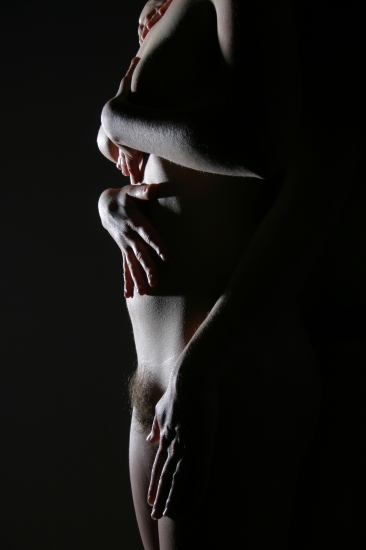 Now, back again to the original quote, and let's
discuss "pornography" and "art". I take photos of naked people,
abstract, indistinct, often fragmentary and, according to my models at
least, artistic. There are few who would call what I produce porn, yet
this is a real photograph of a real person who has no clothing on, who
may be exposing their "naughty bits" to me and to the sensor on my
camera. What would it take to make my images porn? Good lighting, sharp
focus, accurate colour... in other words, a more realistic image. The
further away from reality, the less "pornographic" the less
"exploitative", the less "powerful" the image
Now, back again to the original quote, and let's
discuss "pornography" and "art". I take photos of naked people,
abstract, indistinct, often fragmentary and, according to my models at
least, artistic. There are few who would call what I produce porn, yet
this is a real photograph of a real person who has no clothing on, who
may be exposing their "naughty bits" to me and to the sensor on my
camera. What would it take to make my images porn? Good lighting, sharp
focus, accurate colour... in other words, a more realistic image. The
further away from reality, the less "pornographic" the less
"exploitative", the less "powerful" the image
The New York Times recently had a minor tempest over some
fashion photos made by Paulo Roversi that featured, in one of the
shots, a hazy view of a 17 year old model who had her naked back (and
perhaps the side of her breast) exposed to the camera. Roversi is one
of the most artistic, romantic fashion photographers in the world, and
there's no way that this image could be taken as anything but romantic
fashion. Yet once it was learned that the model was 17 there suddenly
appeared a huge "problem".
The problem wasn't the image. A mainstream American photo
magazine reprinted a much more explicit fashion shot of a then 14 year
old Tiiu Kuik by Roversi that was much more explicit and that magazine
is still being produced, the editor is not in jail for reproducing
kiddy porn. The problem is with the viewer, and more specifically with
the attitude of the viewer toward the creation of the shot.
The same is true with the Jill Greenberg images of crying
kids. The rumpus isn't about a shot of a crying kid, we've all got
those shots in our family albums right beside the naked baby in the
bath, the problem is with what we think was going on while the
photograph was being created. I leave you to continue on to your own
conclusions about what you think was happening with Greenberg's kids
and Roversi's models during those photo shoots. What you figure
happened will determine what meaning the images have for you.
Now re-read that first paragraph in the quote above.
No really, I do. I'm tired of Red, Green and Blue, or whatever the three are for paper as vs. the screen. I want some other colour like I want a new flavour or a new face on the fashion runways.
I want something that tells me I haven't seen it all.
Here's something that's not "black and white" and not "sharp". It's not well exposed, it's not composed, not planned and it doesn't have models who would ever be used in Maxim.
There wasn't a photographer.
It's a start.
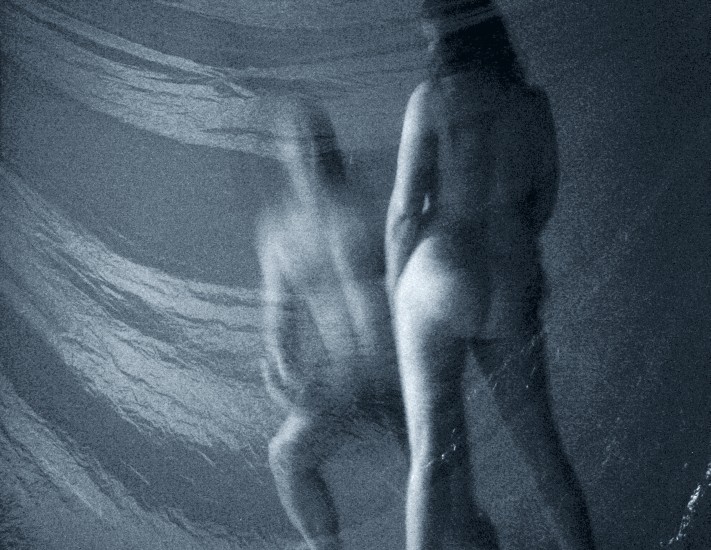
You'll find the rest of the shots at http://180degreeimaging.com/180taylor/still/still.html
OK I downloaded Stumbleupon and have been using it to cruise the net. I recommend doing this for yourself, and paying attention to how you look at the websites. This will give you a pretty good idea whether or not folks are looking at your website.
Here's some things I've noticed.
First, stumbleupon is largely useless and a big time-waster. But then again so's most of the net so never mind, keep looking, it's supposed to get more accurate as you tell it what you like and don't like. Haven't seen any indication of that yet unfortunately.
Orphan photos. As a photographer or artist wanting to sell stuff it's not very useful to have a single image show up without links, identification or any other way to get back to the main website. There's lots of folks out there with pages that get searched and stumbled upon which seem to have no connection to the rest of the net, certainly not to their own website. The World Wide Web is based on hypertext links folks, why would you code a page without at least a link back to your main page.
As an editor I sometimes try to find the artist anyway. One way is to erase the URL address from right to left until I get back to a page that isn't forbidden by the server. Unfortunately this won't do much good if the image is in a big photo sharing site. You could also check the image to see if there's any EXIF or metadata attached but you know what, unless the image is amazing I'm not that ambitious.
Load times. Whoo boy, if I'm drifting around the net using Google images or Stumbleupon I don't have much incentive to wait 30 or 40 seconds for some amazing flash site to load up. I'm out of there in 3 or 4 seconds unless I get at least a title and a name.
Contact information: By all means, make it hard to get in touch. Put the email address in a flash page, and make it non-clickable and part of an image. Sure the spammers can't get hold of it, but neither can I, I don't want to type it by hand by the way, especially if it's more than 5 letters long.
One at a time: I'm not a big fan of websites that show me one full sized shot at a time, one after the other, from the beginning, in random order, with no way to skip ahead, bookmark my place or otherwise do whatever I want. I generally get through about 4 shots and make my decision on the photographer. So what's the point of having more than 4 shots on that site?
Just ran across yet another list of things to do to get inspiration for your photography. Go black and white, shoot yourself, take a course, shoot a single roll of film...
What I want is a list of ways to make more time in the day to shoot all the things in my head. I've never actually had a problem finding things to shoot, or ideas for shoots, my big problem is finding the time to shoot them... no that's actually not true any more so much as finding the inspiration to go and look back through the shoots I have done. The big hold-up since going digital is the editing, I'd much rather be out shooting something else.
At the risk of offending folks, I figure if you need inspiration to go shoot, you're really just looking for a way to use that new gadget. If you're looking for a way to put the camera down, you're a photographer. In the early '80s I finally managed to put my camera down and left it alone for almost 20 years. Before that I'd shot for almost 2 decades straight. I never went anywhere without a camera and most of my childhood was seen through a viewfinder.
Now with digital I've managed to get sucked in once more. I never go out shopping without a point and shoot in my shirt pocket, if I leave home without it I feel naked.
So here's my advice for finding some inspiration to go out and shoot. Pick up the camera, hold it by your side, now look, really look at what's right in front of you. Shoot it.
Here's a test for you, check out http://pinguy.infogami.com/blog/vwm6?= which, as far as I can see on my browser this morning, has all the image links broken. It's a series of famous photos with links to stories about them.
See how many of the images you do not need to look up.
Update: the images are working now so not as much fun, but still worth checking out.
Adam is a recent winner of American Photo of the year, for personal work
http://www.popphoto.com/americanphotofeatures/4862/images-of-the-year-competition-2007.html
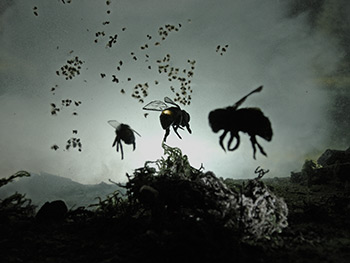
web site: http://www.adam-makarenko.com
menu is lower left hand box - when slide show is activated
180 story: http://180mag.ca/0702/Makarenko/makarenko.html
Went away for the weekend to the cabin. Lest you think it was too much fun, here's yesterday morning just before we dug the cars out and started home.
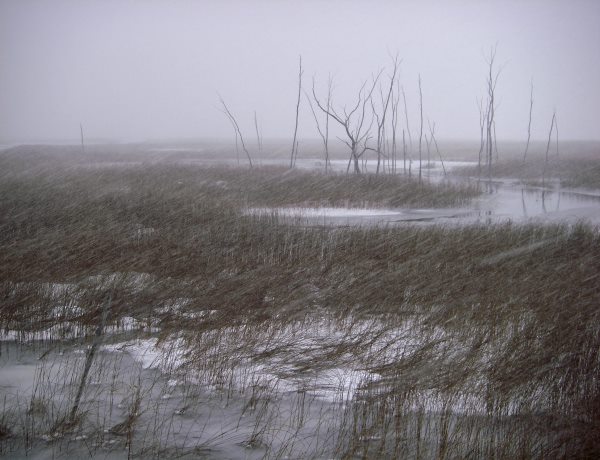
It was a little better back in the trees out of the wind.
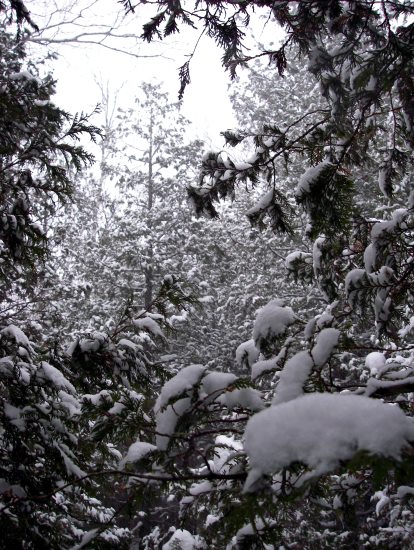
By this time in my walk the camera (a waterproof Pentax W20) was telling me I had zero battery power left. While that never happened with the old Spotmatic II I did once freeze the shutter enough to have 1/2 sized negatives while wandering around in the snow. Square negs from 35mm, how to department.
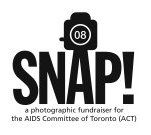
AIDS Committee of Toronto (ACT)
Sunday, March 2, 2008
National Ballet School (400 Jarvis Street)
Live Auction, Silent Auction, complimentary beverages and culinary
delights
TICKETS: SNAP! PAK $95, General $65
To purchase tickets please visit: www.snap-toronto.com
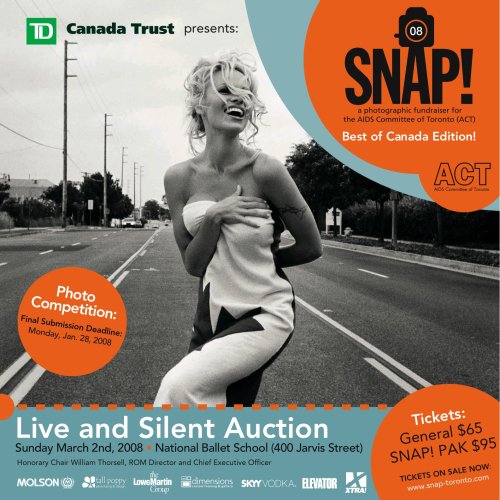
Photo Competition NOW OPEN!
Submission Deadline:
Monday, January 28, 2008
We welcome you to submit all original works of photography or
photo-based art for submission to the seventh annual SNAP! Photo
Competition, presented by TD Canada Trust. Amateur and professional
photographers are all invited to participate. Submissions are accepted
online at our website: www.snap-toronto.com; visit the competition page
for details.
All submissions must be received by 5pm Monday, January 28,
2008.
All submission fees collected benefit ACT. Your participation
allows
ACT to continue to deliver programs and services free of charge to
people living with, affected by, or at risk for HIV/AIDS as well as
develop new initiatives to reduce the spread of HIV in our communities.
PRIZES!
Cash prizes for the Photo Competition are as follows:
Awards Categories
- Best overall submission – Jim P. Shea Memorial Award $500
The winner of the above will also receive an exclusive one-day use of
PIKTO’s turn-key shooting studio in the Distillery District (a $1000
value) and be invited to participate in the SNAP! 2009 Live Auction
- Best Landscape $200
- Best Photo-Journalism $200
- Best Still-Life / Abstract $200
- Best Portrait / Figurative $200
- Best Photo Based $200
- One General Admission ticket (value $65) to SNAP!08
- Posting on the official SNAP! 2008 website
- Special mention in the event catalogue
For more information and details, go to the SNAP!08 website:
www.snap-toronto.com
EVENT & TICKET INFORMATION
6pm Sunday March 2, 2008
National Ballet School (400 Jarvis Street)
Live Auction, silent auction, cash bar, complimentary culinary delights
TICKETS: SNAP! PAK $95, General $65
TICKETS ON SALE ONLINE NOW: www.snap-toronto.com
WANT MORE INFORMATION?
For entry details and submission information, please refer to:
www.snap-toronto.com
Questions about the competition should be directed to: snapphoto@actoronto.org
Questions about tickets should be directed to: tickets@actoronto.org
Media inquiries should go to Kyle Guttormson kyle.guttormson@hillandknowlton.ca
or Nic Schulz nicholas.schulz@fleishman.ca
ACT is located at:
399 Church Street, 4th floor
Toronto, ON M5B 2J6.
Thank you for your participation and support of ACT!5
SNAP!08 STEERING COMMITTEE
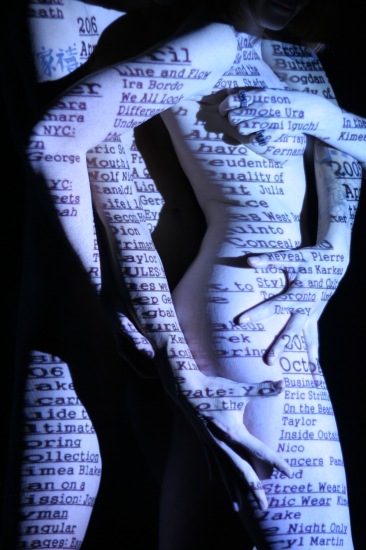
Straight from the camera to you by Kim Taylor
I think a lot about art and intellectual property, about copyright and creativity. I'd like to share the story of this image.
First, in 2005 I started this magazine, 180, mostly because our fashion editor emeritus, Kimea Blake wanted to create a magazine. Having presided over a couple of print mags, including one big-market glossy that tanked after we decided to go into even bigger distribution without having the funds to back us up, I suggested we go with the internet option. Three years later I'm still talking with amazing photographers, being inspired by incredible imagery and learning all the time. The archive page of 180mag exists because of the efforts of all our contributors, and it exists only online, to be pulled down and viewed on your computer screen.
On to the week before last, when my models decided they wanted to do some projection work. I haven't done any for quite a while but hey, I'm always open for suggestions so I spent a week shooting patterns. One of them was my computer screen which showed the archive page for 180mag.
So this Thursday I took a photo, on the suggestion of the models, from three years work by all our contributors, to the server, to my screen, to my point and shoot, to the laptop, to a projector in the studio, to the models' bodies, to my camera, back up to the server, to your screen.
Who "owns" this one? That's not my pose up there, or even my colour choice, the colour is largely a result of having the shutter speed match the colour cycling of the projector. I had the auto focus on, single point so I guess you could say I chose the point of focus. And I pressed the shutter. Oh, and I framed it. I also vaguely remember saying something like "get some hands in there".
I dunno, like I said, I think a lot about intellectual property and the more I think about it, the less I own.

CALL FOR SUBMISSIONS:
XPACE is looking for submissions from emerging and established artists, designers and curators creating work and projects in a variety of media. XPACE is accepting submissions for the main floor and our basement gallery, XBASE. For floor plans and submission requirements please see the submissions section of our website: www.xpace.info
XPACE’s programming is juried by a programming committee three times a year. Our upcoming deadline for submissions is January 25, 2008. XPACE’s deadline for spring programming submissions is May 30, 2008.
Please deliver or mail submissions to:
XPACE Cultural Centre Programming Committee
c/o Sarah Todd
XPACE
Cultural Centre
58 Ossington Ave
Toronto, Ontario M6J 2Y7
Note: Incomplete applications or applications sent via email or fax will not be considered.
Please feel free to discuss your proposal ideas or any questions you may have about the application process with XPACE staff. Inquiries should be directed to XPACE’s Programming Coordinator, Sarah Todd, at 416.849.2864 or sarah@xpace.info
If you would like assistance with your proposal please attend our Programming Submission Workshop on Thursday, January 10 from 3-5pm or 6-8pm. Please bring your XPACE application (work-in-progress welcome). RSVP to sarah@xpace.info
XPACE is a non-profit artist and student-run centre committed to the exposure of multi-disciplinary emerging artists in a professional context that is recognized within the local and international contemporary art and design community. Our goal is to build a bridge between art and design students and their professional counterparts by offering a platform in which they may exhibit their works and be externally recognized, which in turn promotes relevant programming that instigates public discourse and propels the development of contemporary art and design. XPACE is affiliated with the Ontario College of Art & Design.
XPACE
Cultural Centre
58 Ossington Ave
Toronto, Ontario M6J 2Y7
t. 416.849.2864
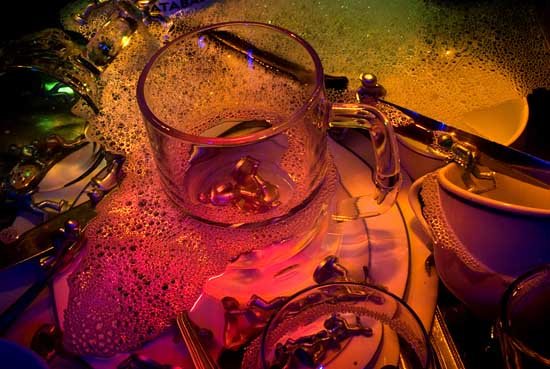
It must be true. The New York Times has just commented that fashion photography is art, as proven by an exhibition and the sale of prints at Miami Beach this year. American Photo claims to have spotted the trend earlier this year, so there!
Fashion photography as art a new thing? I'm looking right now at "Imperfect Beauty" by Charlotte Cotton which was published by the Victoria and Albert museum to coincide with an exhibition of fashion photography in 2000. I suspect I could root through my bookshelf and find some examples of iconic fashion photography from, oh I don't know, Man Ray, Edward Steichen and a few others.
I don't think fashion photography as art is anything new, but it is perhaps coming to the mainstream media's notice as prices for prints go up. After all, ripping pages out of magazines and putting them on walls doesn't really count as collecting art right? It's only art when someone pays for it. It's art when the gallery owners tell their clients that it will appreciate in value over the next 5 years.
Another thing that's starting to happen is that more and more people are looking at the history of fashion photography as a general part of the history of art photography. From the beginning there has been a cross-over of photographers from the "art" world to the "commercial" world of fashion. Since art appreciation is more or less art history, it's a natural flow from studying art photography to fashion photography. Once into the fashion side of things it becomes apparent that there has been a dialog between fashion photographers over the years, and a development of style. You get an appreciation of the genre as a discussion of ideas, in other words, an art form.
Or it may simply be that we can still get a fashion print by Irving Penn for less than we can get one of his still lifes.
American
Photo: Images of the Year Grand Prize Winner
Chris
Anthony
Los Angeles, California
Congratulations to Chris Anthony, 180 contributor and now the winner of the American Photo image of the year competion. Click on the link above to see the article, and you can see Chris' story in the Dec. issue of 180
Below is an announcement of his new exhibition.
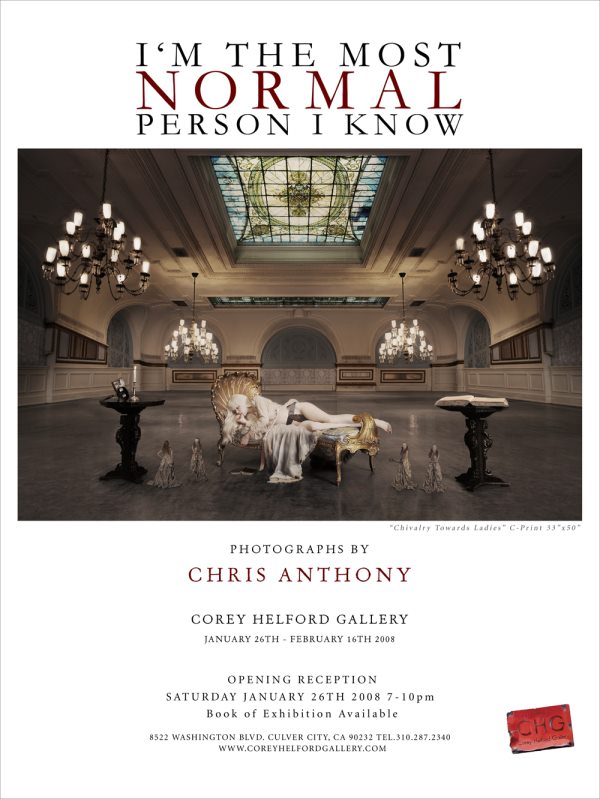
HARUNA MUROTA
unfolding
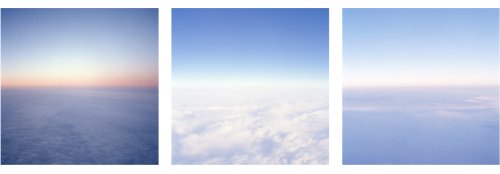
Exhibition opening: December 13th, 2007 6-9pm. Artist will be
in
attendance.
Exhibition duration: December 10th, 2007 - January 13th, 2008.
Image Credits: Untitled images from the series unfolding.
UNFOLDING
The serene images in Haruna Murota’s series unfolding were
inspired by
the artist’s ‘emotional journey and actual travels’. Her images explore
the concept of balance in relationship to individuals and space. The
compositional consistency of each image draws viewers into the changing
horizon of Murota’s images while the elevated point of view ‘provides a
visual space for our own world of sensibilities to expand’.
Haruna Murota is a visual artist working with photography as her
primary medium. The inspiration for her work comes from her own
emotional journey and stream of consciousness. She has studied at
Ryerson University, where she obtained her Bachelor of Fine Arts degree
in Photography Studies. She also studied Art History at the
International Christian University in Tokyo, where she received her
Bachelor of Arts degree.
Pikto is open from Monday to Friday 9-7, Saturday 10-7, Sunday 12-6.
Pikto Inc.
The Distillery District
55 Mill St Bldg. 59-103
Toronto ON M5A 3C4
416-203-3443
www.pikto.com
For more information please contact:
Jenna Edwards, Exhibitions and Workshops Coordinator
416-203-3443 or jenna@pikto.com
So I'm looking at Trevor Brady's website after he sent us the exhibition notice below, and the first fashion story he shows there is "light rain" and he's got lightbulbs hanging on bare wires.
And today, what am I working on?
Yep, but I swear, I started this stuff over a month ago and I didn't steal it from Trevor!
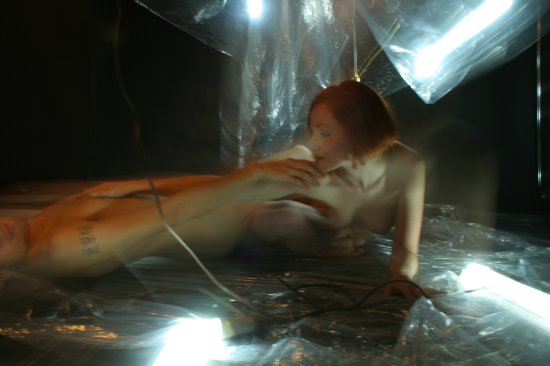
Kim Taylor: Straight from the Camera, Dec 6
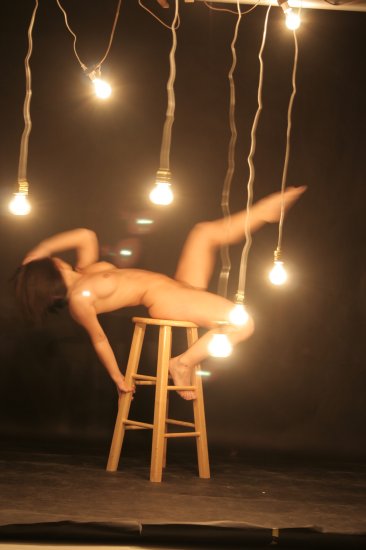
Kim Taylor:
Straight from the Camera, Nov 1... honest
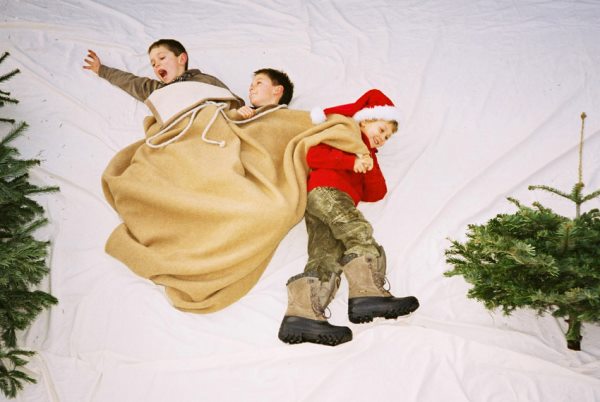
Just a reminder, I am showing 2 bodies of work "At Home - comfort of nudity" and "PLASTIC - an exploding city" at the Canvas Gallery (91 Powell Street, Gastown). The show's opening reception is tonight (Thursday) 7-10pm. If you have nothing better to do, come for a wine.
New Photographs by Sandy Fairbairn
December 7, 2007 to January 1, 2008
Opening Reception: Friday, Dec 7th, 8 - 11 pm

Most of the images in this exhibition depict the artists, colleagues, comrades, associates, sustainers, supporters, patrons, hangers-on, CRAM Junkies, and friends of art who fuel the art scene in St. Catharines, making it dynamic and enduring. Stepping away from his usual manner of working and subject matter, for over a year, Fairbairn has photographed The Scene and the people who keep it on track. The Scene also includes a few photographs of machines, buildings, change and objects of decay.
CRAM Holiday Sale
December 7th, 8 - 11 pm
December 8th, noon to 5 pm
Give the gift of original art....
The CRAMplex
24 James Street - 2nd Floor
downtown St. Catharines, Ontario - The Garden City of Niagara
between Christopher's Magazines & Smoke Shop and The Office*
Contact: Tobey C. Anderson
Mobile: 905.380.3910
http://www.cramart.ca
info@cramart.ca
Hours: when the sandwich board is out and by appointment
CRAM is Canada's smallest and hottest gallery, and a growing concern. CRAM promotes and encourages local investment and support of contemporary art produced by the regional artists who live in Niagara or have strong ties to St. Catharines and the CRAM collective.
The CRAM Collective includes, naturally, the traditional fine art mediums and constructions as well as installation, audio, music, mixed media, video, multi media, writing, and new media by the following practitioners: Tobey C. Anderson, John B. Boyle, Carolyn Wren, the Judy Bowyer, Alice Crawley, Sandy Fairbairn, Alan Flint, Dave Gordon, Ernest Harris, Jr., Marinko Jareb, Ed Aoki, Melanie MacDonald, John Moffat, Richard Purcell, Stephen Remus, Kevin Richardson, Dennis Tourbin, Nadia Laham, Hayden Booth, Peter S. Wing, Cassie Kent, Kyle Bishop, John Venditti, Maggie Groat, Rena Burns, Sheldon Rooney, Joe Stable, Pam Maw.
CRAM gratefully acknowledges the financial support of the St.
Catharines Cultural Investment Programme (SCCIP) for the Dennis
Tourbin Website Project (2007)
*CRAM events catered by The Office restaurant
The 180 Gallery has been revamped and I hope to be presenting more of our contributors in the gallery very soon. You'll find the gallery under it's own domain name at http://180gallery.com/
If you're a contributor to 180 magazine and want to be in the gallery, please drop me a line.
If you want to contribute to 180, please don't hesitate to get in touch. While we usually request participation in the magazine, we do look at all submissions.
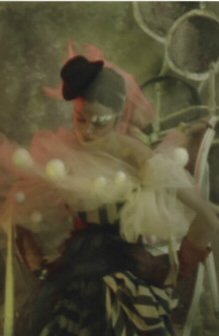
Reflecting, Connecting and Creating...
21 Entrancing Photographic Art Tableaux by Arline
Malakian
GALA PREVIEW: Thursday, Dec. 6, 18:30-22:00 Gallery
133, 1260
Castlefield Avenue, Toronto
On December 6, Gallery 133 will open gates to a sneak
preview of the
The Gaze--21 entrancing tableaux encompassed in Arline Malakian’s first
solo exhibition. What was initially meant as a vehicle to befriend the
digital medium, became a one-year cathartic sensory voyage the
culmination of a 20-year career, of this award-winning international
fashion photographer.
Malakian is inviting guests to light up a candle as
they step into the
space of The Gaze. In her words, “this symbolic gesture will prepare
observers to reflect, connect, and create; to partake in the personal
and collective nature that is so unique to The Gaze experience.”
Embedded in the photographic prints, is the idea that “nothing was born
from the logical or pratical” and that “what you see is all instinct,
intuition and the moment of rendering the connection.” In sharing her
recorded chance encounters with each of the subjects portrayed in The
Gaze, the artist effectively elicits in the observer’s mind, their very
own life-defining, and revealing, thoughts, feelings, and dreams.
1260 Castlefield Avenue Toronto ON M6B 1G3
416-504-6099
www.gallery133.com
